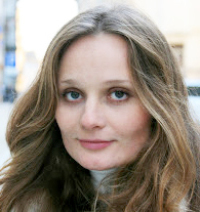| Natalia Baranova (IST Austria) |
| Thu 05 Mar 2020, 12:00 - 13:00 |
| C.H Waddington Building, Seminar room 1.08, King's Building's |
If you have a question about this talk, please contact: Julie Fyffe (jfyffe)

For E. Coli to divide its rigid cell wall has to be remodeled and grow inward, precisely in the middle of the cell. How this is achieved remains a long-standing question in bacterial physiology. It is believed that such remodeling is coordinated by FtsZ cytoskeleton. During the early stages of division, FtsZ has to assemble the rest of the division machinery - about 20 proteins, most of them are transmembrane proteins that transiently interact with each other. I used a bottom-up approach to reconstitute and watch in the real-time assembly of the division complex on a planar lipid membrane. We revealed that four proteins (FtsZ, FtsA, FtsN, FtsQ) moved directionally in a GTP dependent manner, and self-organized into dynamically rotating rings. FtsQ and FtsN are the transmembrane proteins that can link FtsZ filaments with cell wall synthesis enzymes and thus coordinate their dynamics across the cellular membrane. Surprisingly, on the single molecular level - none of the proteins in the reconstituted assembly moved directionally. Instead, the cytoplasmic peptide of FtsN was transiently captured to FtsZ filaments and afterwards diffused randomly away, suggesting that observed directed motion of the transmembrane proteins is an emergent behaviour, controlled by FtsZ treadmilling dynamics. Thus, FtsZ does not move individual division proteins but instead creates a moving signalling zone to transmit the information on when and where to active cell wall synthesis.
Host: Dr Teuta Pilizota


